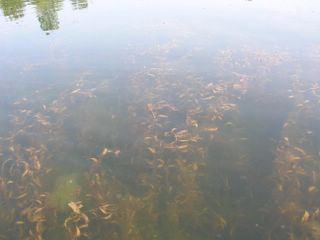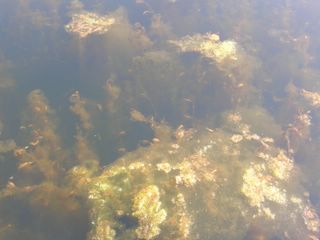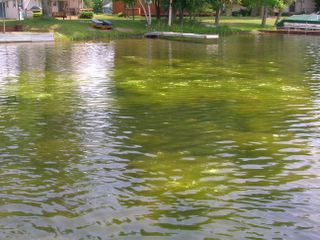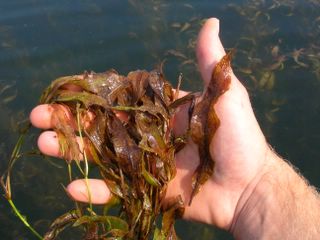Goodbye Weeds, Hello Filamentous Algae Blooms
As treated aquatic vascular plants fall out of the water column, they decay and release nutrients that then become available to filamentous algae. In confined, shallow coves and bays this nutrient release commonly gives rise to filamentous algal blooms. This season these blooms will be treated prior to the 4th of July Holiday weekend for three reasons: 1. The algaecide applicator is unavailable until after the holiday, 2. The blooms are not quite done forming and would therefore avoid detection and treatment, and 3. Chemical treatments are always timed to minimize restrictions on recreational water uses by residents. Once the localized blooms have stabilized in the next few days, the algaecide applicator will be out to apply chelated copper sulfate to blooms in the designated treatment areas. We are currently watching blooms in Far West (near the north channel, and the north side of the east bay), The channel east of the island on Main, as well as the finger of Main near the Buchanan and West Royal pump and a shoreline bloom on Rush Lake.





